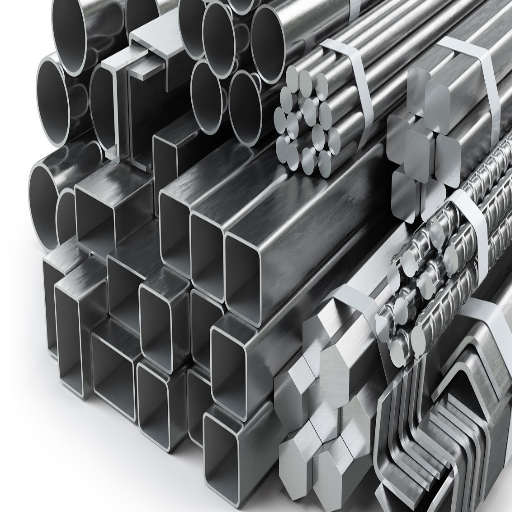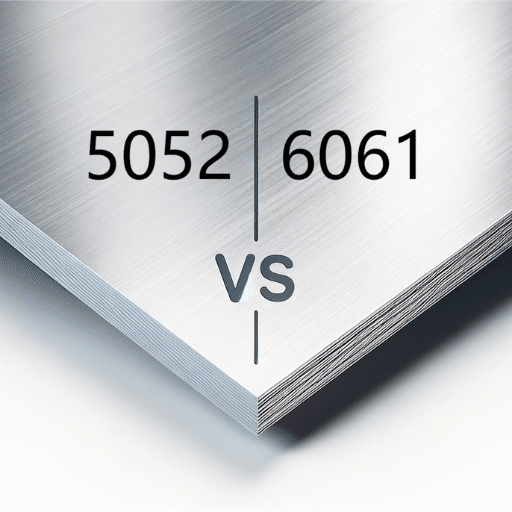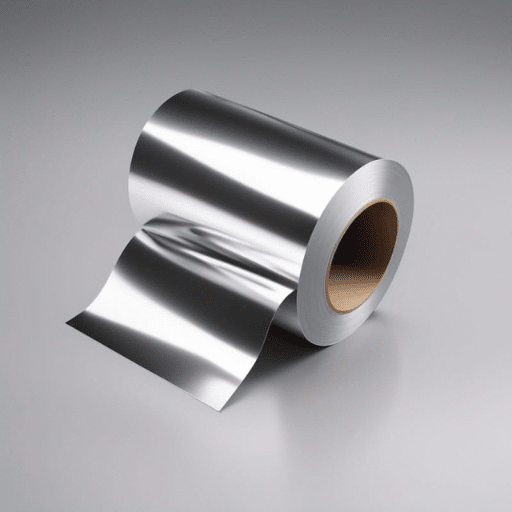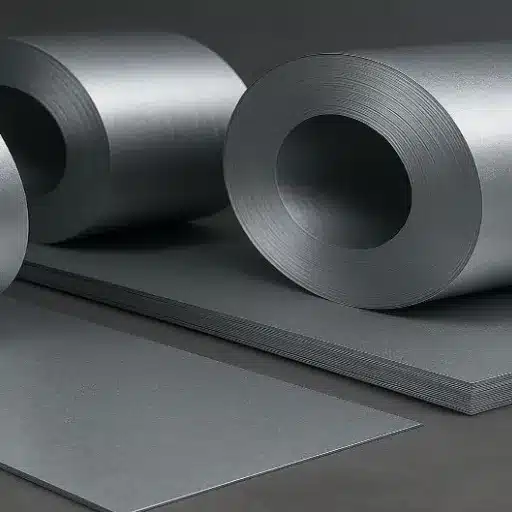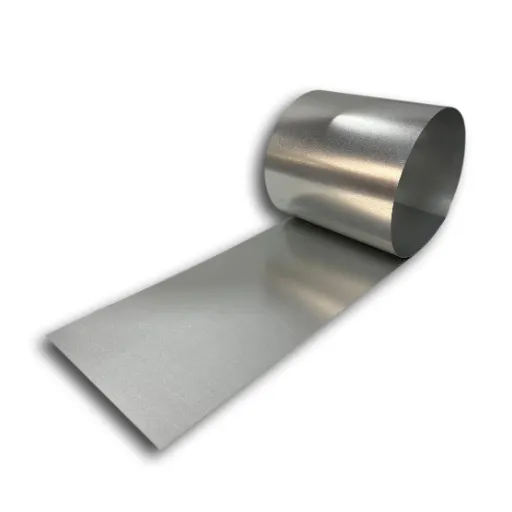When selecting the ideal material for your engineering or manufacturing project, understanding the distinctions between alloy steel and stainless steel is critical. Both materials offer unique properties and benefits, making them suited for specific applications, but choosing the wrong one can lead to inefficiencies, increased costs, or compromised performance. This article dives into the characteristics, strengths, and drawbacks of alloy steel and stainless steel, equipping you with the knowledge to make an informed decision tailored to your project’s requirements. Whether you’re optimizing for strength, corrosion resistance, or cost-effectiveness, this guide will clarify the crucial differences you need to consider.
What is Alloy Steel?
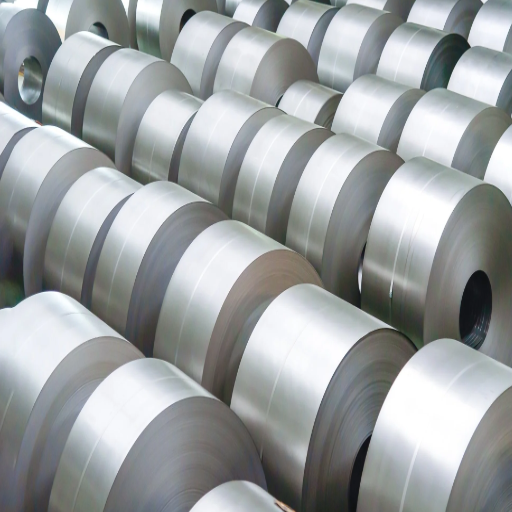
Understanding Alloy Steels and Their Composition
To improve its characteristics, alloy steel is produced by combining steel with one or more alloying elements. These elements can include manganese, nickel, chromium, molybdenum, vanadium, and silicon, which are incorporated in different amounts depending on the desired properties. While the composition of alloy steel consists of iron and carbon, the alloying elements added improve the steel’s strength, durability, or resistance to certain conditions.
The classification of alloy steel can be listed as low-alloy steel and high-alloy steel, depending on the concentration of alloying elements. Low-alloy steel has a total alloying element content of less than 5% and strikingly improves the cost-to-strength ratio. In comparison, high-alloy steel has more than 5% alloying elements which leads to extreme hardness, corrosion, or heat resistance.
Consider the purpose of the material and the operational environment when choosing alloys. For instance, chromium and molybdenum bolster corrosion resistance and high-temperature strength, which makes them appropriate for components of power plants. Meanwhile, nickel improves toughness and impact resistance, making it better suited for high-stress structural applications. Comprehending the composition of alloy steel is essential to ensure the material fulfills particular performance and longevity standards.
Properties of Alloy Steel and Its Uses
Alloy steel results from the precise tailoring of physical and mechanical characteristics through the addition of various alloying elements. Alloy steel possesses properties such as increased strength, tougher structural integrity, enhanced resistance to wear, and improved corrosion resistance. For instance, the addition of chromium improves oxidation resistance and hardness, while increased vanadium content boosts tensile strength and fatigue resistance. Such characteristics make alloy steel versatile for a broad range of applications. This steel’s composition is highly adjustable, allowing alloy steel manufacturers to adapt it to specific operational and environmental requirements.
One of the most important applications of alloy steel is in pipelines, bridges, and buildings, where high-strength structural features are essential, due to the extreme conditions they undergo during use. Moreover, alloy steel is often required in the automotive and aerospace industry, where components need to withstand severe conditions like high altitudes, pressure, and temperatures. Due to its durability, wear resistance, and strength, precision-engineered parts such as crankshafts, gears, and landing gears are manufactured from alloy steel.
We utilize another noteworthy use of alloy steel as in the energy field in making components of power plants such as turbines and boilers, which perform well and are durable even when exposed to high temperatures and corrosive environments. Outside the industry, alloy steel is employed in making tools of high precision, like drill bits and cutting tools, which require hardness and resistance to wear. Its functionality makes alloy steel an essential part of numerous industries and proves that it can be shaped to fit demanding requirements.
What is Stainless Steel?
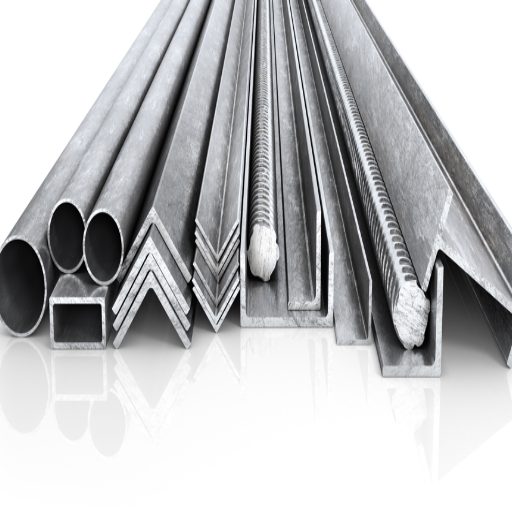
Key Characteristics of Stainless Steel
Stainless Steel is known to have remarkable resistance against corrosion due to the presence of chromium that forms a thin stable oxide layer on the surface of the material. This passive oxide layer is quite robust as it helps self-heal protecting the alloy against rusting and staining even in environments like dampness, moisutre, chemicals and temperatures.
Stainless Steel also has a remarkable weight-to-strength ratio, which is essential for industries like construction and space, as it provides superb mechanical properties while being light in weight. In addition, stainless steel has remarkable thermal and chemical resistance, making it dependable even in harsh environments like high temperatures in industrial furnaces or even extremely acidic or alkaline places.
Another reason why this alloy is much preferred is due to the multiple grade stainless steels available for specific applications. For instance, austenitic stainless steels (grades 304 and 316) have superior formability coupled with weldability, while martensitic grades have high strength and hardness. These characteristics make it applicable for cutlery and surgical instruments. Duplex stainless steels, which have austenitic and ferritic properties, are often used for structural purposes needing strength and resistance to corrosion.
It is because of these properties that stainless steel is crucial in medical devices, food processing technology, architectural and construction fittings, and even marine hardware. Its adaptability, longevity, and reliability underscore its value across industrial and commercial sectors, meeting stringent performance and durability standards.
Types of stainless steel Grades
The various grades of stainless steel are differentiated by their composition and the specific requirements that they are intended to meet. Their main classes are:
- Austenitic Stainless Steels: The largest segment of stainless steel production is the austenitic grades because of their high chromium and nickel content, which offer great corrosion resistance and formability. Some of the more mainstream examples are the 304 and 316 grades. Grade 304 is popular for both residential and commercial applications because it is inexpensive and strongly resistant to many environmental factors. In contrast, Grade 316 is known for its superior resistance to corrosion in saline or chemically aggressive environments due to the molybdenum added to its composition. These grades are non-magnetic and remain stable structurally at wide-ranging temperatures.
- Ferritic Stainless Steels: With low nickel content, ferritic stainless steels are mainly composed of chromium and are recognized for their good resistance to stress corrosion cracking and oxidation. Grades 430 and 409 are quite popular in automotive exhaust systems, architectural structures, and domestic appliances. Although ferritic steels do not have as much resistance to corrosion as austenitic grades, their lower price, as well as their excellent thermal conductivity, make them ideal for certain industrial applications.
- Martensitic Stainless Steels: This category is exemplified by higher carbon content, which increases their hardness and strength while maintaining a moderate level of corrosion resistance. Typical examples are Grades 410 and 420, which are used in make surgical instruments and turbines as well as in cutlery. Martensitic stainless steels are magnetic and heat treatable, which increases their toughness and wear resistance.
- Duplex Stainless Steels: The duplex grades consist of a mix of austenitic and ferritic stainless steels, which provide good strength along with excellent corrosion resistance. These steels are particularly resistant to stress corrosion cracking and pitting, making them useful in chemical processing, seawater applications, and oil and gas industries. Like 2205 and 2507, these common grades are selected due to their enhanced mechanical performance and long life in harsh environments.
- Precipitation-Hardening (PH) Stainless Steels: These grades are capable of achieving high strength through a series of heat treatment steps. PH stainless steels (for example, Grade 17-4PH, UNS S17400) have high tensile strength with great corrosion resistance. They see frequent use in aerospace and nuclear industries, as well as in high-performance machinery, where precise and dependable functioning is necessary.
Choosing the right grade of stainless steel allows industries to optimize performance outcomes for specific operations. Each grade has its distinct benefits and constraints, thus ensuring its useful application in different industries.
Applications of Stainless Steel in Various Industries
Stainless steel is a material used in many industries because of its strength, resistance to corrosion, and heat tolerance. Following is a detailed list of five critical industries, in which stainless steel is highly important by showing specific applications and data:
- Aerospace Industry: For aerospace components like turbine blades, thrust reversers, and exhaust systems, turbine-grade stainless steels like 321 or 347 are used in the radial turbines because of their high-temperature mechanical properties. In critical flight systems, oxidation-resistant materials can enhance reliability and safety over long periods.
- Medical and Healthcare Industry: Stainless steel is an alloy of steel that is used in combination with cobalt, chromium, and molybdenum. These materials provide resistance to sterilization and allow prolonged use in the biological environment making them ideal for surgical instruments, implants, and medical devices. For orthopaedic implants and surgical tools, stainless steel grade 316L is preferred, supporting the fact that more than 60% of surgical instruments are made from stainless steel.
- Food and Beverage Sector: Due to its non-reactive, hygienic, and easy-clean properties, stainless steel is particularly important for food processing, storage, and transportation. It is found in vats, mixing tanks, and pipelines, as well as kitchen equipment. It is also popular in food preparation areas. Its affordability and resistance to corrosion make Grade 304 stainless steel a frequent choice.
- Construction and Architecture Sector: Stainless steel’s strength, adaptable nature, and visually pleasing look make it one of the most utilized materials in contemporary stainless steel construction design. It is used in structural supports, railings, facades, and roofing systems. Grade 304 and 316 are among the most used. The material offers longevity and low maintenance, which translates to reduced costs over time.
- Chemical and Petrochemical Sectors: In chemical processing plants, stainless steel is essential; it is used for storage tanks, piping, and heat exchangers. It is ideal for industry use, as duplex stainless steels and grade 904L resist corrosion from aggressive chemicals such as acids and bases. Replacing traditional materials with stainless steel in corrosive environments has reduced maintenance costs by 30%, according to studies.
Stainless steel’s performance and adaptability to harsh environments make it indispensable across the world’s industries.
Comparing Alloy Steel and Stainless Steel
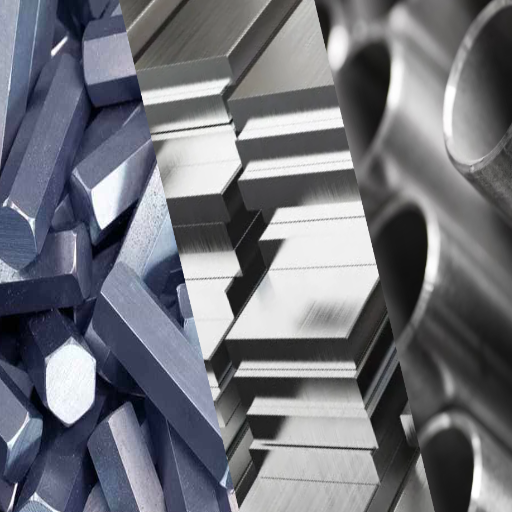
Difference between alloy steel and Stainless Steel
Steels are differentiated based on their primary use, e.g., alloy steel is stronger, harder, and versatile, while stainless steel is for its corrosion resistance and looks.
Now, I will summarize the key differences as follows in tabular format:
|
Attribute |
Alloy Steel |
Stainless Steel |
|---|---|---|
|
Tensile |
Superior |
Moderate |
|
Durability |
Higher |
Lower |
|
Rustproof |
Limited |
Excellent |
|
Finish |
Matte |
Shiny |
|
Expense |
Affordable |
Expensive |
|
Usage |
Industrial |
Decorative |
|
Heat Treat |
Applicable |
Restricted |
Advantages of alloy steel vs stainless steel
Depending on the use, alloy steel and stainless steel have unique benefits. Their differences arise in composition, strength, and cost-value. Alloyed steel has elements like manganese, chromium, vanadium, or nickel added to carbon steel. This type of steel is well-known for its incredible toughness and tensile strength. It performs remarkably in construction, automotive, and heavy machinery industries, which require a load-bearing capacity. Its durability under stress and ability to be heat-treated for greater hardness contribute to its economical advantage for industries concerned with mechanical wear and tear.
Stainless steel isa type of steel that contains more than 10.5% of chromium, which makes it have high corrosion resistance. This steel performs well in the marine, food processing, and healthcare industries where moisture, chemicals, and salts are prevalent. The downside to stainless steel is its price. Its chromium and nickel content drives its cost higher than alloy steel, making it unsuitable for large-scale manufacturing projects where corrosion resistance is not a priority and cost is a concern.
In conclusion, alloy steel or stainless steel can be chosen based on the mechanical strength needed, environmental conditions, and budget available, highlighting the industry’s strategies when choosing materials.
Corrosion Resistance: alloy steel and stainless steel
When determining the corrosion resistance of alloy steel and stainless steel, their chemical compositions and intended uses must be taken into account. In my opinion, stainless steel is the undoubted champion when it comes to prioritizing corrosion resistance. The strong protective oxide layer, which stainless steel rubs off or forms on its surface, owes its existence to chromium in the stainless steel and aids in preventing rusting even in harsh environments like coastal and industrial centers. Depending on the grade, stainless steel is also resistant to chemical, acidic, and chloride pitting, making it ideal for critical industries like medical and marine engineering.
Alloy steel does have a lower resistance when it comes to corrosion, but its strength and hardness mechanical properties more than make up for it. When looking to keep corrosion to a minimum, alloy steel can be encapsulated in controlled environments or be treated with protective coatings to prolong its lifespan. In comparison to stainless steel, alloy steel possesses less corrosion resistance, making it more suited for structural or heavy-duty applications where budget is a dominant factor and the gear doesn’t spend much time exposed to moisture or chemicals due to demand-structural waterproofing.
As far as I’m concerned, the two materials should diverge upon criteria assessing the environmental conditions the material will encounter and operational performance metrics needed. The Alloy variant is much cheaper, as it has comparatively lower costs for maintenance, and is almost as effective as stainless in less corrosive environments. This carefully tailored choice, either was,y is critical for industrial applications where maintenance-free durability is the prime objective.
Advantages of Using Alloy Steel

Why Choose Alloy Steel for Your Project?
Alloy steel has long been viewed as a jack-of-all-trades material for many industries and construction works due to its perceived economic value. Being combined with carbon, along with other alloying elements, such as chromium, manganese, molybdenum, nickel, or even vanadium, improves the value of alloy steel’s mechanical properties. Along with providing increased strength, these additional alloying elements also enhance the toughness and resistance to wear and corrosion of the material.
One of alloy steel’s main benefits is its versatility across many applications. For instance, High-strength low-alloy (HSLA) counterparts possess exceptional strength and are lightweight, which makes them suitable for automotive frames, large pipelines, and heavy equipment. Furthermore, higher alloy variants, such as those with increased chromium content, have unparalleled corrosion resistance, making them suitable for chemical processing and oil refining industries. Alloy steel is also highly machinable and weldable, which simplifies manufacturing steps and reduces timelines.
In addition, newly emerging developments in the production of alloy steel utilize modern metallurgy to control microstructures with precision, tailoring values for optimal performance during specific environmental and operational stresses. This advancement enhances a wide range of uses, including infrastructure and aerospace materials. In contrast, alloy steel is more cost-effective than stainless steel, offering durability and dependability for non-extreme operational conditions. For planners, alloy steel strikes the best balance between performance, cost, and durability, all while catering to industrial demands.
Properties of alloy steel that Stand Out
The properties of alloy steel make alloy indispensable in indusry work. One of its most distinct features is its increased strength-to-weight ratio which comes from adding chrome, magnese, and molybdenum. These alloying elements increase tensile strength, ductility, and resistance to wear, making alloy steel most effective under intense pressure.
Equally exceptional, alloy steel also has remarkable resistance to corrosion especially in places were game harsh chemicals and even more extreme temperatures are present. The addition of chrome in certain grades helps form a protective oxide layer which reduces rust and oxidation. Heat treatments like quenching and tempering also help alloy steel susit its mechanical properties for its intended use.
Alloy steel also possesses thermal conductivity, which is essential for working equipment like power plant turbines and car exhaust systems. In addition, alloy steel is easier to machine and well, which makes it more desirable for fabrication without risking the strength of the structure. These features are critical for alloy steel to be used in construction, transportation, and energy industries.
Cost-effectiveness of alloy steel compared to Other Materials
Compared to stainless steel, titanium, and composites, alloy steel is cost-effective because of its affordability, strength, and versatility.
And now, let me present you with a table of the most important points in a summarized way:
|
Attribute |
Alloy Steel |
Other Materials |
|---|---|---|
|
Cost |
Affordable |
Higher |
|
Strength |
High |
Varies |
|
Durability |
Excellent |
Varies |
|
Corrosion |
Moderate |
Higher (e.g., stainless) |
|
Applications |
Versatile |
Specialized |
|
Weight |
Moderate |
Varies |
Understanding Corrosion Resistance in Metals
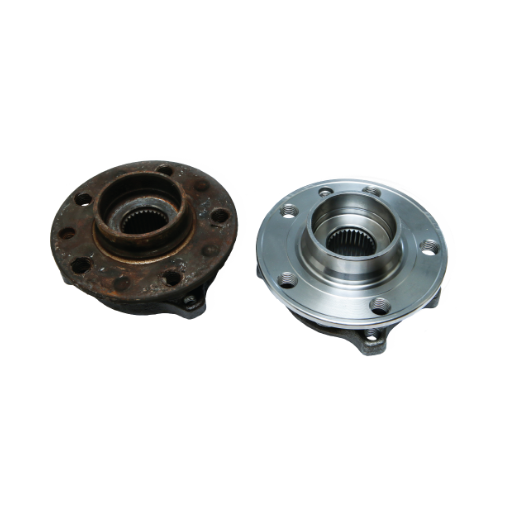
How stainless steel resists rust
Stainless steel is shielded from rust by a passive oxide layer, which serves as a protective barrier against corrosion. Chromium content, which ranges between 10.5% to 30% in stainless steel compositions, is key here. The atmosphere or water contains oxygen that, when reacting with chromium, yields a thin, stable chromium oxide film. Self-repairing is this layer; if scratched, a damaged surface will result in exposed chromium oxidizing for reconstruction of the barrier, where oxygen is present.
Different grades of stainless steel contain additional alloying elements like nickel, molybdenum, and nitroge,n resulting in different levels of corrosion resistance. Austenitic stainless steels, 304 and 316, for example, are some of the most rust-resistant stainless steels and are popular for use in marine applications and industrial chemical processes because of their superior durability. The presence of molybdenum in 316 stainless steel adds greater resistance to chloride pitting corrosion.
To stress this point, while stainless steel has great corrosion resistance, it is not completely immune to rust in extreme cases. Environments with low oxygen, stagnant conditions, or high levels of chlorides, including saltwater, can breach the protective oxide layer if the alloy composition is not adequately suited to withstand these factors. Selecting the appropriate grade of stainless steel according to the application is crucial in achieving long-term resistance and preserving the integrity of the structure.
Role of alloy elements in Metal Durability
Alloying elements influence to a great extent the metals’ possessive traits and endurance in differing spheres of environment. Chrome, for example, is a constituent of stainless steel, as it takes part in the construction of a passive oxide layer which prevents corrosion and oxidation. Usually, a chromium content of above 10.5% is deemed important for effective corrosion resistance. Nickel, on the other hand, increases ductility and toughness at low temperatures, also increasing these properties of the alloy in acidoplastic media.
Molybdenum is another critical element and is particularly beneficial in environments exposed to chloride ions due to its resistance to pitting and crevice corrosion. For example, austenitic stainless steels with 2-3% molybdenum experience markedly lower levels of localized corrosion than those without molybdenum, even in harsh marine and industrial conditions. Carbon content is often reduced in stainless steel, but carbon-containing manganese improves strength and produces lower austenite stability. However, excessive carbon can lead to carbide precipitation, which reduces corrosion resistance. This problem is treated by producing low-carbon grades such as 316L.
To stop the alloy from intergranular corrosion, other elements like titanium and niobium are added since they can bond to the excess carbon. These stabilizers increase the alloy’s useful lifetime when it has to withstand constant high temperatures. Less frequently, copper serves to increase the resistance of certain industrial alloys to reducing acids like sulfuric acid.
The combination of these elements guarantees that metal alloys retain their physical properties and withstand abrasion from the environment. The metals are altered in different ways for different branches, including aerospace, marine engineering, and chemical processing, by using advanced methods in metallurgy, such as superalloys and ultrahigh specialty stainless steels.
Choosing the Right type of alloy for Corrosive Environments
Applying the proper alloy in corrosive conditions requires understanding the specific chemical and physical requirements of the application. Temperature, pH levels, oxidizing or reducing agents, and even mechanical stresses are some of the factors that need to be analyzed if an informed choice is to be made. For example, some nickel alloys like Hastelloy are particularly resistant to pitting and corrosion stress cracking in hydrochloric acid, and therefore are well suited for regions with strong acids. Also, duplex stainless steels composed of austenitic and ferritic microstructures are used in seawater processing due to their low resistance to localized corrosion.
Coated and surface-treated alloys are also an important consideration as they perform significantly better in corrosive environments. For example, stainless steels can be protected by applying some ceramic coatings or electropolishing, sustaining their operational life while lowering maintenance costs. Furthermore, developing fields in metallurgy, such as high-entropy alloys (HEAs), are one such field that holds promise. HEAs, comprised of five or more principal elements in nearly equal atomic ratios, offer unrivaled resistance to a wide variety of corrosive environmental conditions.
In the end, the decision-making process requires an amalgamation of theory and empirical evidence such as corrosion rate measurements, thermodynamic computations, and practical simulations. It is from these evaluations alongside advancements within material science that engineers obtain the best possible performance and sustained reliability, even in the most difficult environmental conditions.
References
-
RapidDirect: Alloy Steel vs Stainless Steel: Exploring the Differences
This source provides a detailed comparison of tensile strength, applications, and other key properties. -
Xometry: Comparing Alloy Steel and Stainless Steel
This article discusses corrosion resistance, heat treatment, and alloying elements in both materials. -
Jiga: Alloy Steel vs Stainless Steel: Which one should you choose?
This resource highlights the strengths, toughness, and industrial applications of both materials.
Frequently Asked Questions (FAQ)
Q: What are the main differences between alloy steel and stainless steel?
A: The main differences between alloy steel and stainless steel lie in their composition and properties. Alloy steel is a type of steel that includes a variety of elements such as nickel, chromium, and manganese to enhance its properties. Stainless steel, on the other hand, contains a significant amount of chromium, which gives it corrosion resistance. This article compares alloy steel and stainless steel to help you determine which is suitable for your project.
Q: What are the different types of alloy steel?
A: Types of alloy steel include low alloy steel and high alloy steel. Low alloy steel has a smaller percentage of alloying elements and is often less expensive than stainless steel. High alloy steel contains a higher percentage of alloying elements and is used when specific properties are needed.
Q: What are the advantages of stainless steel over alloy steel?
A: The advantages of stainless steel compared to alloy steel include its corrosion resistance, aesthetic appeal, and low maintenance requirements. The properties of stainless steel make it ideal for applications where exposure to moisture and chemicals is a factor.
Q: How does the corrosion resistance of stainless steel compare to that of alloy steel?
A: Stainless steel generally offers superior corrosion resistance due to the presence of chromium, which forms a protective oxide layer. Alloy steel may also have corrosion-resistant properties, but generally, it is less resistant than stainless steel.
Q: In what applications is alloy steel more suitable than stainless steel?
A: Alloy steel is often more suitable for applications that require strength and toughness, such as in construction and heavy machinery. Alloy steel may provide better performance in high-stress environments compared to stainless steel.
Q: Is alloy steel harder than stainless steel?
A: Alloy steel has a higher hardness compared to stainless steel due to its composition and heat treatment processes. This makes it ideal for applications requiring wear resistance and durability.
Q: How do the costs of alloy steel and stainless steel compare?
A: Generally, alloy steel is less expensive than stainless steel. This is due to the lower cost of alloying elements and simpler production processes. However, the specific cost can vary based on the steel type and the required properties for the project.
Q: What are the common properties of stainless steel?
A: Common properties of stainless steel include high corrosion resistance, good formability, and aesthetic appeal. Stainless steel may also offer heat resistance, making it suitable for various industrial applications.
Q: How does the strength of alloy steel compare to stainless steel?
A: Alloy steel generally offers greater strength compared to stainless steel, making it suitable for structural applications. However, stainless steel’s strength is often sufficient for many applications, especially where corrosion resistance is a priority.

